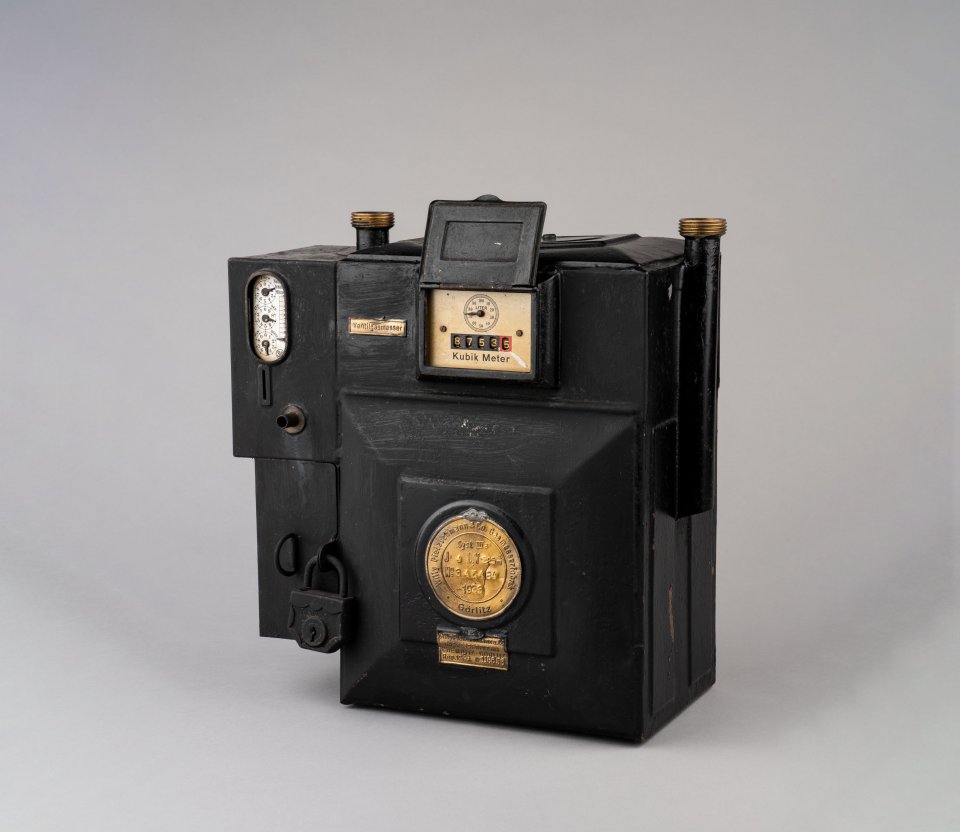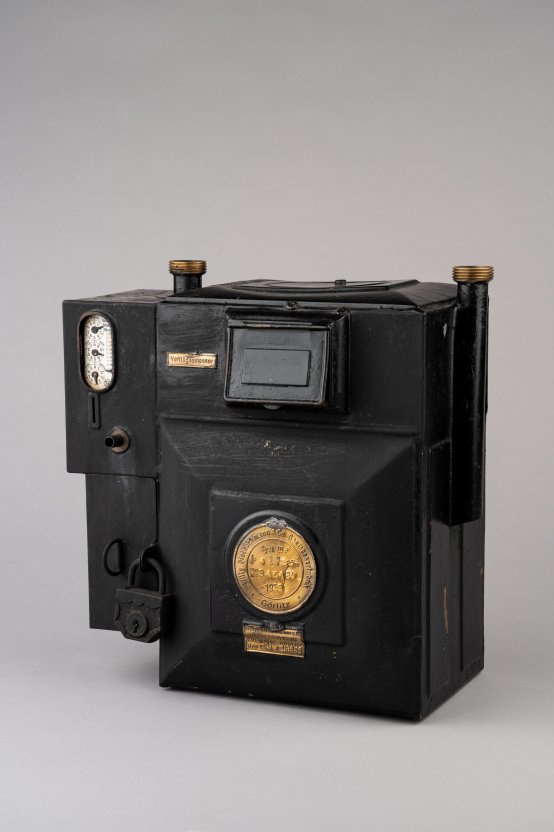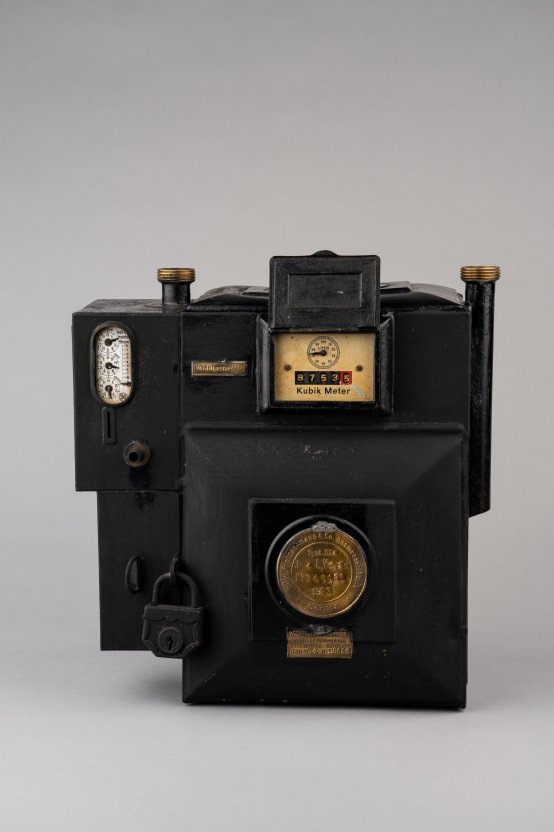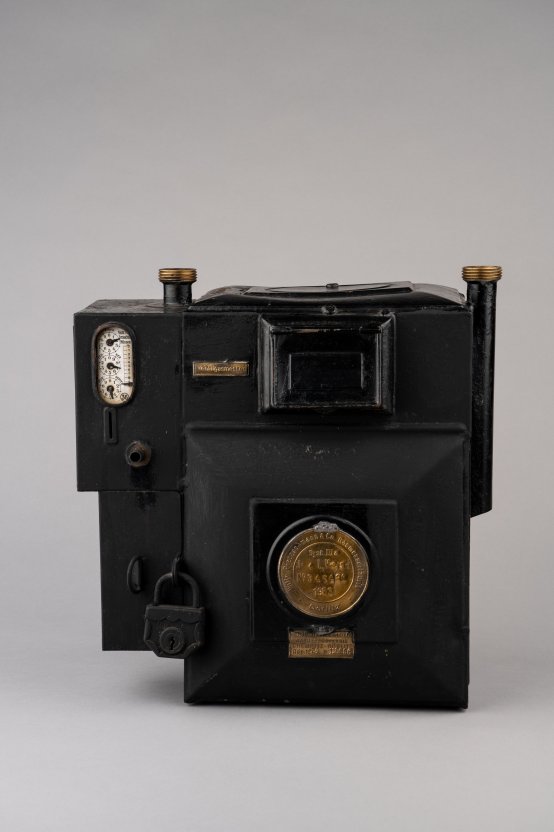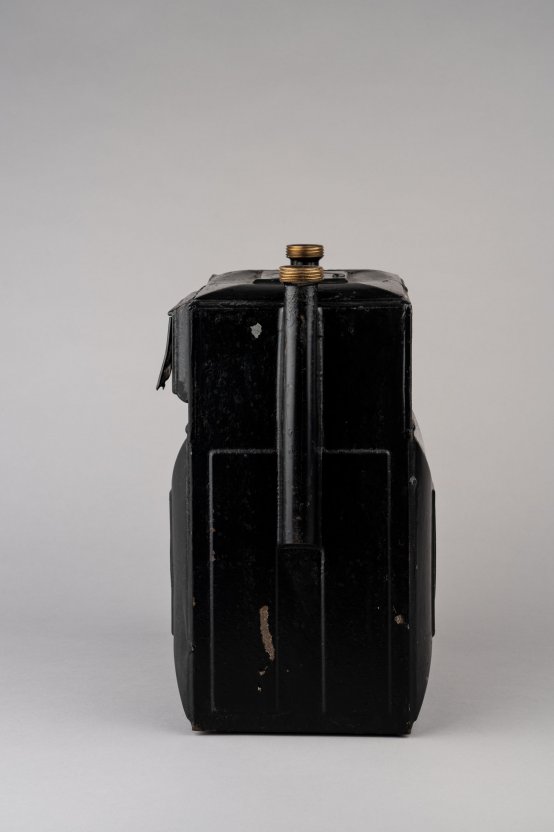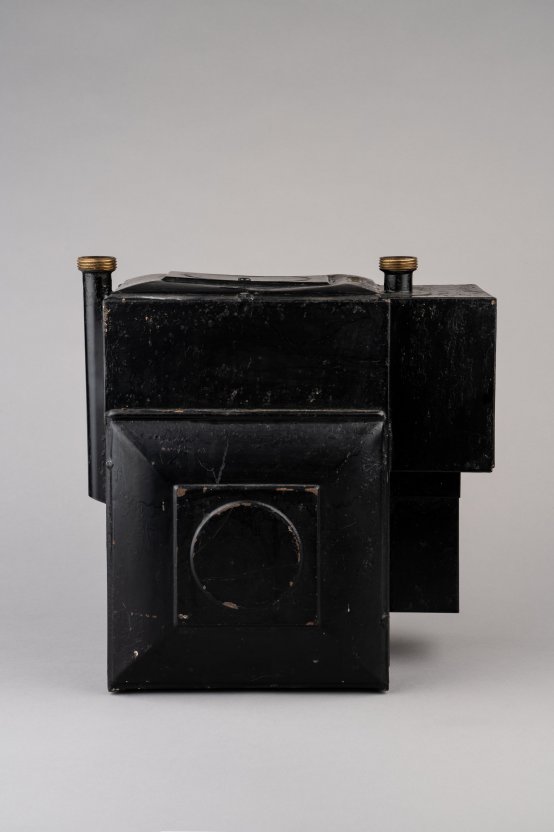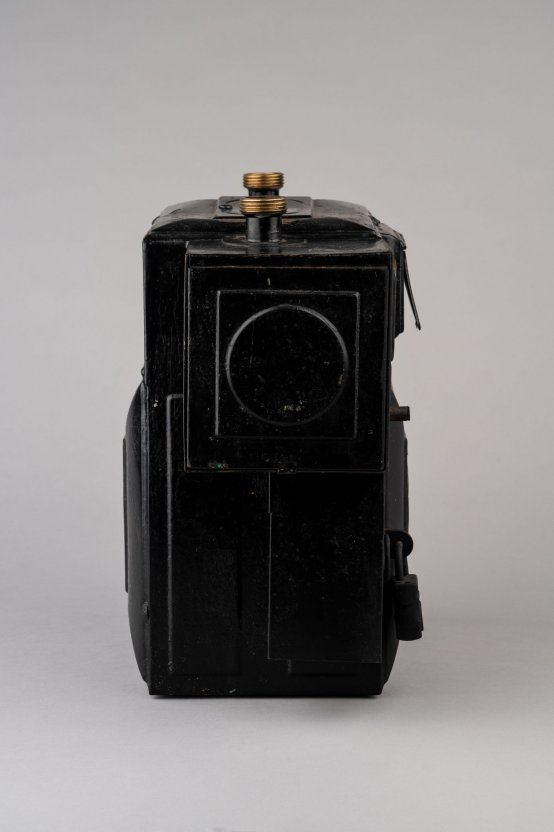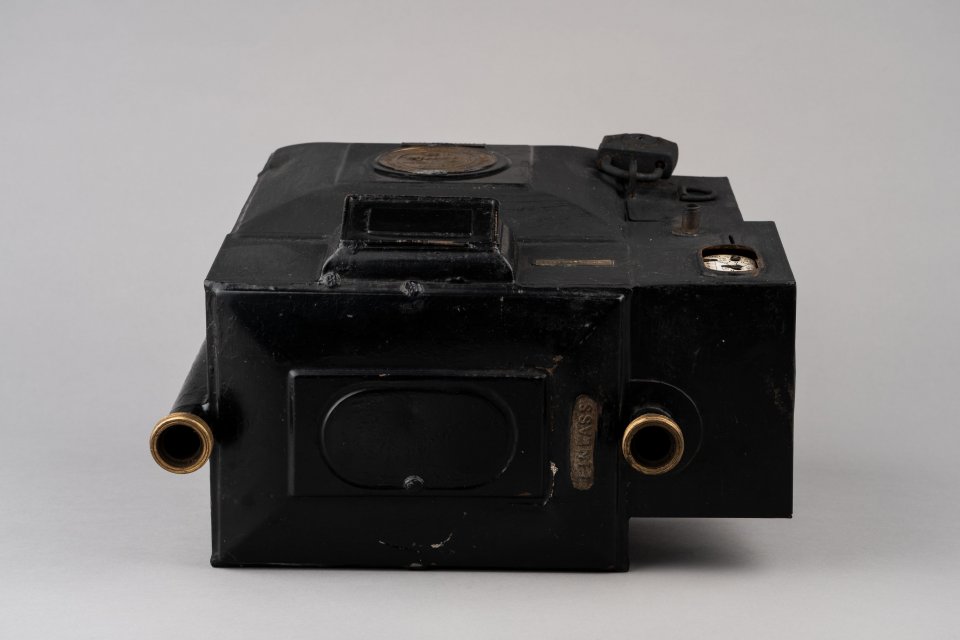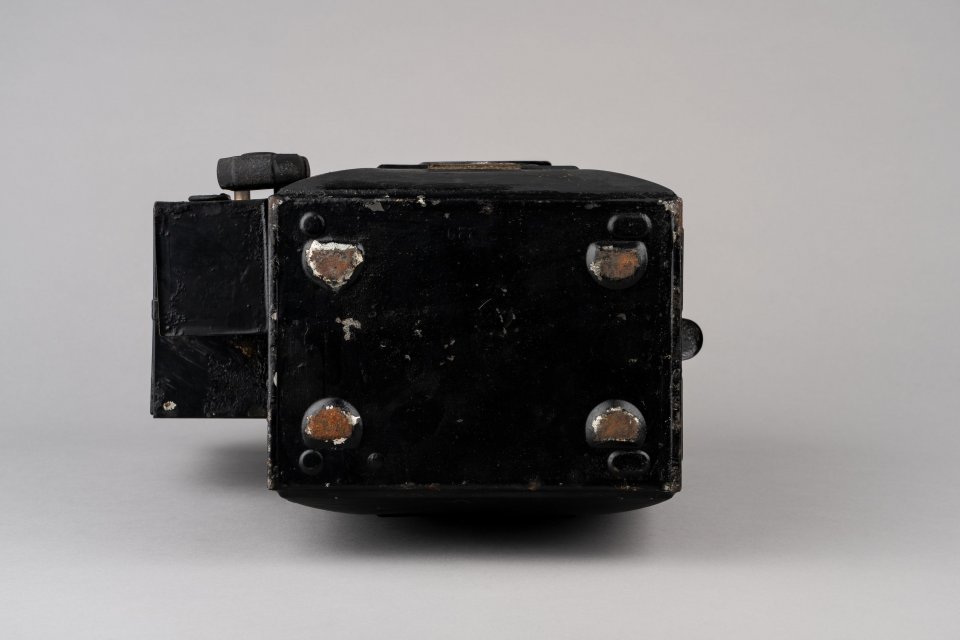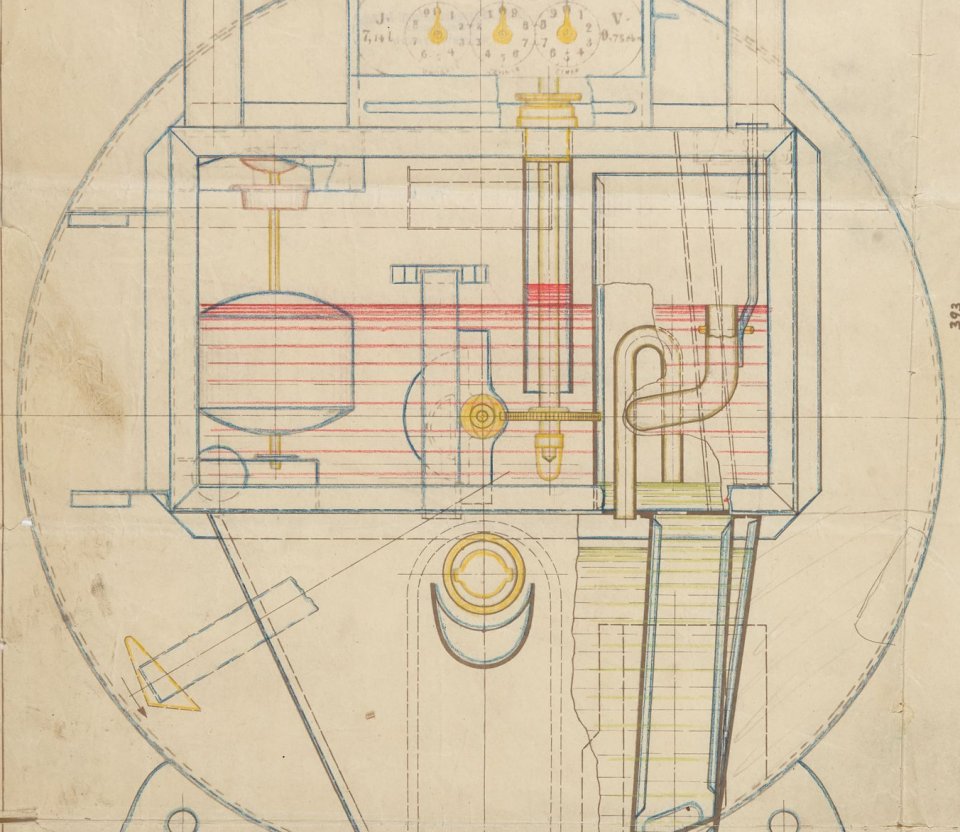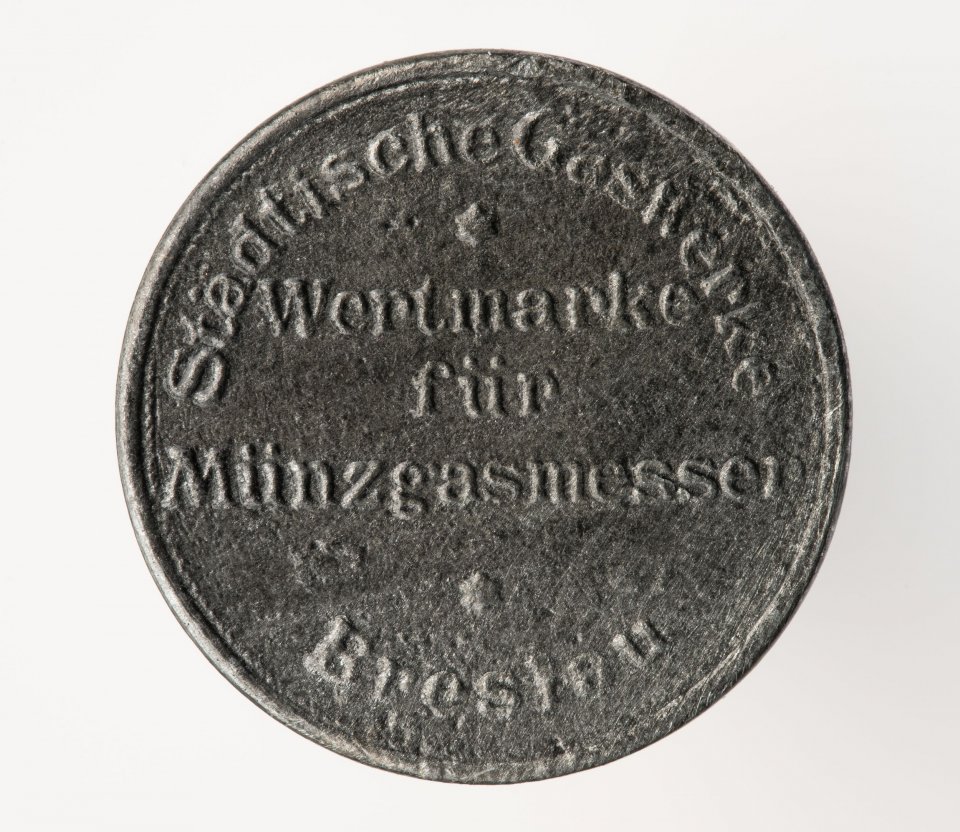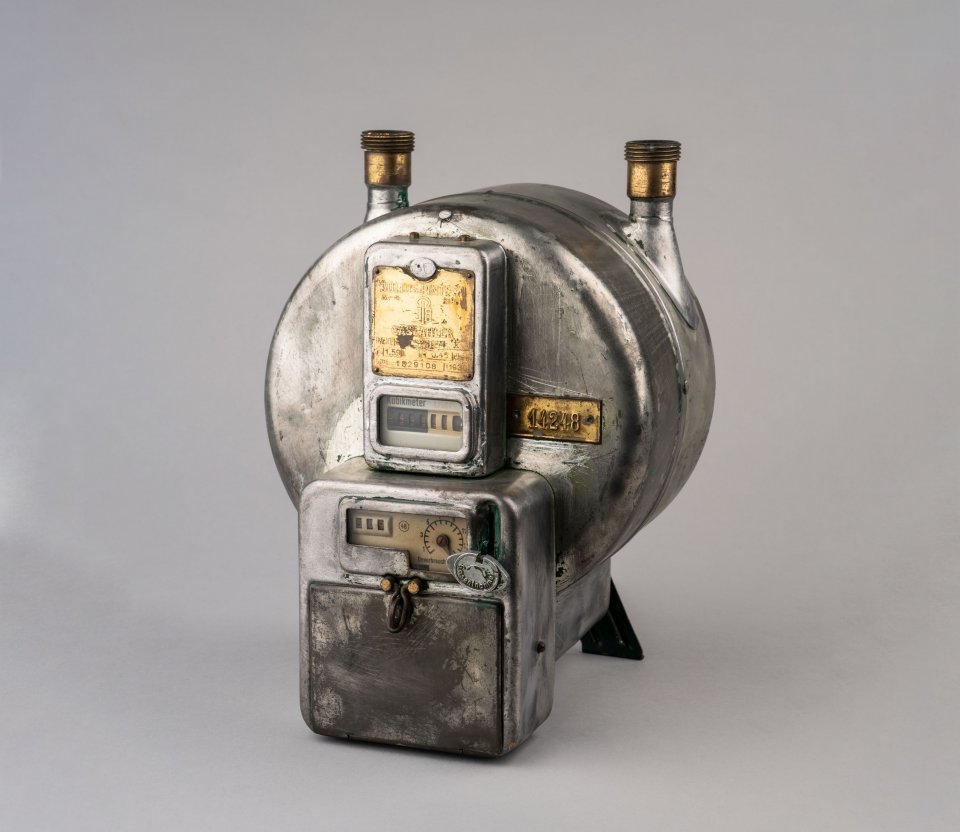Token gas meter
Category Gas meters
Subcategory Token
Year of manufacture/creation 1933
Manufacturer/author Willy Pietschmann & Co.
Place of manufacture/creation Görlitz, Germany
Size
Height: 36 cm
Width: 33.5 cm
Length: 21.5 cm
Weight: 7,62 kg
Material stainless steel, glass, goatskin
Museum/Storage location Gasworks Museum in Paczków
Date of admission to the museum 1992
Rights to the exhibit Gasworks Museum in Paczków
Rights to digital images public domain
Tags
Exhibit description
The gas meter was manufactured using innovative materials, such as steel and non-ferrous metals, while its bellows are made of leather.
Before World War I, it was possible to settle one’s gas bill with coins carrying the denomination of 10 pfennigs. After the war, the coins were replaced with tokens.
The gas meter was activated with tokens of diverse values for different quantities of gas. In order to prevent fraud, gasworks introduced unique slot mechanisms which prevented the use of tokens issued by other towns. Tokens often differed in weight and material from which they were made, while the town’s coats of arms they featured made their identification possible.
